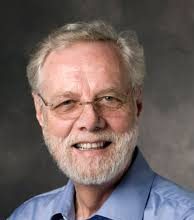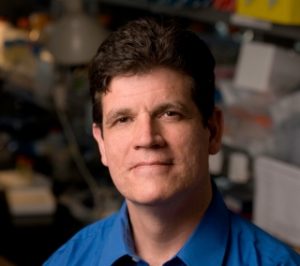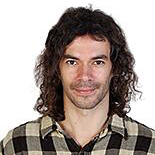Contact us
We are always open to accepting new members from EMBL and Stanford University. If our projects or interests match yours, contact us – we would love to hear from you.
Creating synergies between EMBL and Stanford’s research communities
At the core of the Alliance are our Members – faculty from EMBL and the Stanford University School of Medicine.
Their combined expertise spans a broad spectrum of life science research from structural biology and bioinformatics, to chemistry, imaging and genomics. They are committed to the exchange of information to solve complex biomedical challenges together.
We are always open to accepting new members from EMBL and Stanford University. If our projects or interests match yours, contact us – we would love to hear from you.

Stanford
Projects:
Networks of subcellular compartments in health and disease (with Sinem Saka).
Mitochondrial thermal proteome profiling for the study of oncometabolites interactome (with Mikhail Savitski and Sinem Saka)

EMBL
Project:
Connecting organizational scales from the bottom-up to investigate emergence in embryonic pattern formation (with James Ferrell & Anna Erzberger).
Assessing the inter-kingdom conservation of lifespan variants evolved in yeast (with Dmitri Petrov).

EMBL
Project:
Identification and in vitro functional characterization of human protective polymorphisms against severe malaria (with Elizabeth Egan)

Stanford
Project:
Developing global interaction networks of microbiome-encoded genes (with Peer Bork)

Stanford
Research Interests:
Using and developing innovative methodologies to discover novel molecular mechanisms and therapies for kidney health.

EMBL
Research Interests:
Molecular basis of chromatin-based silencing and cellular readout of cytosine methylation.

EMBL
Project:
Developing global interaction networks of microbiome-encoded genes (with Ami Bhatt)

Stanford
Project:
Dissecting molecular mechanisms of epigenetic silencing (with Edith Heard)

Stanford
Research Interests:
The development of cryo-EM methodology to determine 3D cellular structures. We also work on the EMDataResource which is an open access database for 3D EM for developing software, data standards and validation methods.

EMBL
Project:
Quantifying tumour evolution and fitness landscapes (with Christina Curtis)

Stanford
Project:
Integrative model of human cell signalling (with Evangelia Petsalaki)

Stanford
Projects:
Quantifying tumour evolution and fitness landscapes (with Isidro Cortés-Ciriano)
Deciphering Mechanisms and Rates of Chromosomal Instability in Gastric Cancer (with Jan Korbel)

Stanford
Research Interests:
Discovering new calcium-dependent signaling pathways in humans that are regulated by the calcineurin protein phosphatase.

Stanford
Project:
Personalizing dilated cardiomyopathy (with Lars Steinmetz & Utkan Demirci)

Stanford
Project:
Personalizing dilated cardiomyopathy (with Lars Steinmetz & Ron Davis)

EMBL
Research Interests:
Developing novel molecular tools for advanced biological imaging by combining synthetic chemistry and protein engineering

EMBL
Project:
Cell cycle adaptation to aneuploidy: How do cells adapt to carrying an extra chromosome? (with Gavin Sherlock)
Visualizing parasitic plasmid interactions with host nuclear components (with Gavin Sherlock)

Stanford
Research Interests:
Understanding the response of roots to water-limiting conditions and across different organizational scales from the individual cell type to the whole plant.

EMBL
Research Interests:
Assembly mechanisms and function of protein-RNA complexes at the single-molecule level

Stanford
Project:
Identification and in vitro functional characterization of human protective polymorphisms against severe malaria (with Maria Bernabeu)

EMBL
Project:
Connecting organizational scales from the bottom-up to investigate emergence in embryonic pattern formation (with Alexander Aulehla & James Ferrell)

Stanford
Research Interests:
How oncogenes initiate and sustain tumorigenesis including: how oncogene activation causes tumor regression, and how tumors escape dependence on oncogenes.

Stanford
Project:
Connecting organizational scales from the bottom-up to investigate emergence in embryonic pattern formation (with Alexander Aulehla & Anna Erzberger)

Stanford
Project:
Co-translational nascent chain modifications and their adaptation to cellular stress (with Misha Savitski & Lars Steinmetz)

Stanford
Research Interests:
Regulation of self-renewal, proliferation and differentiation in adult stem cell lineages: including regulation of cell type specific transcription programs, cell-cell communication, and the role of differential mRNA processing and translational control in progression from one cell state to the next.

EMBL
Research Interests:
Genome regulation and topology during embryonic development including: chromatin topology, chromatin remodelling during cell fate decisions, variation and plasticity in regulatory networks, developmental enhancers, and single cell genomics.

Stanford
Research Interests:
Computational approaches to understand biological systems using genomic and proteomic data across populations. Most of our work is in cancer and neurodegenerative disease, but we love to hear about any interesting questions!

Stanford
Research Interests:
Keith HodgsonDeciphering the molecular events responsible for touch, pain, and position sensation in C. elegans.

EMBL
Research Interests:
Understanding the mechanistic interplay between genome regulation, chromatin and environmental cues (microbiome), with emphasis on intergenerational effects

EMBL
Research Interests:
Using biochemical and systems-level approaches to investigate the connections between gene expression and cell metabolism, and their roles in human disease.

EMBL
Research Interests:
Dissecting molecular mechanisms of epigenetic silencing (with Howard Chang)

Stanford
Project:
Disentangling gene function & organisation in the microbiome (with Nassos Typas)

Stanford
Research Interests:
How G protein-coupled receptors decode extracellular cues into dynamic and context-specific cellular signaling networks to elicit diverse physiologic responses

Stanford
Project:
Using scMulti-omics to probe clinical outcome of child leukemia treatment (with Judith Zaugg)

Stanford
Project:
Comprehensive pharmacogenetic analysis using real world data (with Ellen McDonagh)

EMBL
Project:
Transcription Factor cooperativity atlas (with Anshul Kundaje).
Learning the cis-regulatory code at single-molecule resolution (with Anshul Kundaje)

EMBL
Project:
Somatic mosaicisms in cancer (with Alex Urban)
Deciphering Mechanisms and Rates of Chromosomal Instability in Gastric Cancer (with Christina Curtis)

Stanford
Research Interests:
Characterizing the structure and mechanism of G-Protein Coupled Receptors (GPCRs).

Stanford
Projects:
Integrative machine learning to decipher genome function (with Oliver Stegle)
Transcription Factor cooperativity atlas (with Arnaud Krebs)
Learning the cis-regulatory code at single-molecule resolution (with Arnaud Krebs)

Stanford
Research Interests:
TRNA editing. We are interested in ADAR-mediated RNA editing, for both its biological function in dsRNA-mediated innate immunity and its utility as a tool for transcriptome engineering. (with Anshul Kundaje)

EMBL
Research Interests:
We employ state-of-the-art cellular cryo-electron tomography to study phase-separated assemblies in cell biology and to advance our understanding of the molecular organization of the cytoplasm.

EMBL
Research Interests:
We develop methods and software for high-throughput, automated crystallography and use them to study the structure of sensing and signalling molecules.

EMBL
Project:
Comprehensive pharmacogenetic analysis using real world data (with Teri Klein).
Systematic extraction of standard-of-care treatment from real world data to evaluate novel therapeutic targets (with Russ Altman).

Stanford
Project:
Mapping the effects of genetic variants from genes to cells to disease (with Oliver Stegle)

EMBL
Research Interests:
Advanced optical techniques for deep tissue microscopy. In particular, we work in the fields of multi-photon microscopy, active wave-front shaping, photo-acoustics as well as computational imaging. Looking for collaboration in cell & developmental biology and neuroscience, where our novel imaging approaches can give new insights.

EMBL
Research Interests:
Dissecting the cellular and molecular mechanisms of nervous system assembly and the underlying glia–neuron crosstalk, using advanced genetics, genomics and live imaging approaches.

Stanford
Project:
Watching protein/protein- protein/ligand-interaction dynamics within the mTOR signaling pathway resolved in time and space (with Gergely Papp)

EMBL
Research Interests:
Studying the function of visual circuits using functional imaging, genetics, virology and behavioural assays

EMBL
Project:
Mitochondrial thermal proteome profiling for the study of oncometabolites interactome (with Monther Abu-Remaileh)
Co-translational nascent chain modifications and their adaptation to cellular stress (with Judith Frydman & Lars Steinmetz).
Proteomics analysis of the stress response in vertebrate organs during aging (with Dan Jarosz & Anne Brunet).

EMBL
Research Interests:
Networks of subcellular compartments in health and disease (with Monther Abu-Remaileh)

Stanford
Project:
Cell cycle adaptation to aneuploidy: How do cells adapt to carrying an extra chromosome? (with Gautam Dey).
Visualizing parasitic plasmid interactions with host nuclear components (with Gautam Dey)

Stanford
Research Interests:
Developing a mechanistic understanding of signal translation at the cell membrane using structural biology, biochemistry and simulation methods

EMBL
Projects:
Integrative machine learning to decipher genome function (with Anshul Kundaje)
Mapping the effects of genetic variants from genes to cells to disease (with Stephen Montgomery)

Project:s
Personalizing dilated cardiomyopathy (with Ron Davis, Utkan Demirci, Euan Ashley, Victoria Parikh)
Dissecting NGLY1 deficiency (with Carolyn Bertozzi)
Co-translational nascent chain modifications and their adaptation to cellular stress (with Misha Savitski & Judith Frydman)
Unlocking the potential of image cell sorting for functional genomics and cell biology (with Anna Kreshuk)

Stanford
Project:
Physiological regulation of metabolism in single cells (with Theo Alexandrov)

EMBL
Project:
Disentangling gene function & organisation in the microbiome (with KC Huang)

Stanford
Research Interests:
Gene expression and epigenetics: how DNA methylation, chromatin modifications, and RNA influence chromatin dynamics to affect gene regulation.

EMBL
Project:
Integrated structural biology (with Keith Hodgson)
Efficient in-cellulo X-ray data acquisition using advanced sample enrichment and delivery tool (with Tina Cohen & Mark Hunter).
Long-range reaction intermediates channeling in multi-enzyme complexes and allosteric regulation (with Soichi Wakatsuki).

Stanford
Research Interest:
Developing bio-inspired biomaterials and platform technologies to engineer tissues and organs

EMBL
Projects:
Using scMulti-omics to probe clinical outcome of child leukemia treatment (with Maya Kasowski)
Multiomics for pulmonary hypertension (with Marlene Rabinovitch)
Genetic regulation of chromatin (with Mike Snyder)
Dissecting gene regulatory networks driving cell type differentiation in a marine annelid (with Detlev Arendt and Bo Wang).

Stanford
Project:
Using image-assisted cell sorting to determine the molecular mechanism controlling nuclear size (with Diana Ordonez and Lars Steinmetz)

EMBL
Project:
Using image-assisted cell sorting to determine the molecular mechanism controlling nuclear size (with Jan Skotheim and Lars Steinmetz)

EMBL
Project:
Watching protein/protein- protein/ligand-interaction dynamics within the mTOR signaling pathway resolved in time and space (with Kacper Rogala)

EMBL
Project:
Deep Learning-Powered Study of 3D Tissue Structures and Molecular Cues in Breast Cancer Initiation (with Garry Nolan)
Unlocking the potential of image cell sorting for functional genomics and cell biology (with Lars Steinmetz/Stanford)

Stanford
Project:
Deep Learning-Powered Study of 3D Tissue Structures and Molecular Cues in Breast Cancer Initiation (with Anna Kreshuk)

EMBL
Project:
Mechanism of CO2 fixation reaction by enoyl-CoA carboxylases/reductase (with Soichi Wakatsuki).

Stanford
Project:
Mechanism of CO2 fixation reaction by enoyl-CoA carboxylases/reductase (with Andrew McCarthy).
Long-range reaction intermediates channeling in multi-enzyme complexes and allosteric regulation (with Matthias Wilmanns).

EMBL
Project:
Dissecting gene regulatory networks driving cell type differentiation in a marine annelid (with Judith Zaugg and Bo Wang).

Stanford
Research Interest:
We are an inter-disciplinary team of basic and clinical scientists with shared interests in using molecular genetics as a tool to uncover novel biology. We use a variety of different approaches to address important challenges in the field, which range from studies that work genome wide to those which are focused on specific genes and even precise nucleotide changes to understand their impact on pancreatic islet biology.

Stanford
Research Interest:
Roles for microRNAs and circular RNAs during RNA virus infections.

Stanford
Research Interest:
The Chen lab studies circuitry and molecular mechanisms underlying motivated behaviors, and how maladaptive changes in these circuits leads to neuropsychiatric disorders.

Stanford
Research Interest:
The O’Brien lab studies spatial and temporal dynamics of stem cell lineages in vivo using cutting-edge live imaging approaches.

Stanford
Research Interest:
Research in our lab is aimed at defining the structural correlates of broad and potent antibody-mediated neutralization of viruses. We combine biophysical and structural methods (e.g., cryo-EM), protein engineering, and in vivo approaches to understand how enveloped viruses infect host cells and elicit antigen-specific immune responses.

EMBL
Research Interest:
The Trivedi group aims to understand the self-organisation of cells, fundamental to metazoan development, through comparative study of embryos and organoids that generate a global coordinate system de novo.

Stanford
Project:
Dissecting gene regulatory networks driving cell type differentiation in a marine annelid (with Judith Zaugg and Detlev Arendt).

Stanford
Research Interest:
The Pleiner lab combines molecular, cellular and structural biology to study the pathways and molecular machines that regulate protein homeostasis, with a particular focus on membrane protein biogenesis and quality control at the human endoplasmic reticulum. We develop alpaca-derived nanobodies as intracellular tools to study and reverse failure of protein misfolding and aggregation associated with neurodegeneration and ageing.

Stanford
Project:
Assessing the inter-kingdom conservation of lifespan variants evolved in yeast (with Alexander Aulehla).

Stanford
Project:
Systematic extraction of standard-of-care treatment from real world data to evaluate novel therapeutic targets (with Ellie McDonagh).

Stanford
Project:
Proteomics analysis of the stress response in vertebrate organs during aging (with Mischa Savitski & Anne Brunet).

Stanford
Project:
Proteomics analysis of the stress response in vertebrate organs during aging (with Mischa Savitski & Dan Jarosz)..

Stanford
Project:
Comparative cell evolution in nitrogen-fixing endosymbioses (with Yannick Schwab and Gautam Dey).

EMBL
Project:
Comparative cell evolution in nitrogen-fixing endosymbioses (with Ellen Yeh and Gautam Dey).